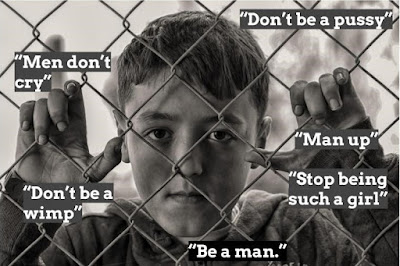“According to Data USA, approximately 2,000 Black or African-Americans live in Scioto County, and 1, 275 of them live in Portsmouth. They means only 725 of these people live outside the city limits in a county where 35.1 times more White (Non-Hispanic) residents than any other race or ethnicity reside.”
– “Scioto County,” Data USA
I am a lifelong resident of Scioto County, Ohio, which has a population of 75,314 according to U.S. Census “Quick Facts estimates (July 1, 2019). Of those county residents, 2.7% are Black or African-American alone, and 1.9% are two or more races. The vast majority of those Blacks live within the city limits of Portsmouth.
The estimated population of the United States is 328,239,523 of which the census reports 13.4% are Black or African-American. As you can see, the minority population in Scioto, a rural Appalachian area, is 5 times below the national average. Simply put, this means that interactions with large groups of minorities – including day-to-day contact and cultural exposure – are limited where I live.
In the light of the continuing movement for racial equality and justice, I fear that in areas where people of color are few, Black residents feel physically and psychologically isolated. In Appalachia, the Black population is small, and therefore easily overlooked by White people and mainstream media. In truth, Black people in Appalachia are a neglected minority within a neglected minority.
It's unclear whether the recent organizing for racial justice will result in political change or in a greater awareness of the needs of people of color locally. I sincerely hope it does. Yet, here, where many White people have never discussed such topics and where de facto racism has a long history, threats to understanding how race plays a role in our lives are real. I pray residents will be able to see the invisible … to recognize the need to emphasize with the minorities in their midst.
Joshua Outsey, who's from Knoxville, Tennessee, and lives in Big Stone Gap, Kentucky (Harlan County), says …
"Around here, folks tend to believe that if you're not with the same political affiliation, it doesn't matter how else you identify – if you're gay, if you're straight, if you're Black, if you're from an indigenous community or community of color. If you're not Republican, if you don't have the same political views, you are bad. Period."
(April Simpson. “Few in Number, Black Residents in Appalachia Push for Justice.” Pew. October 05, 2020.)
The need for transparency and the lack of racial diversity go hand-in-hand. Needed change will not occur in areas where minority voices are seldom, or never, acknowledged or valued unless we broaden our views. White, Anglo-Saxon, Protestant populations must not be indifferent to obvious racial problems. Neither White fragility nor the false belief that civil rights have already been achieved should prevent the continued march toward equality.
As an ex-teacher, I am very interested in how students are dealing with the tragedy of the death of George Floyd. You may believe such controversial topics should not be entertained in the public school curriculum; however, current events are impossible to ignore, and, in this case, pertinent to vital racial education. Students want to find answers, and educators need to understand that they have an obligation to lead a very important dialogue on race and police brutality.
As the trial of Officer Derek Chauvin continues, I wonder what questions students have about the testimony. Just as important as the students' concerns, I wonder what teachers are saying in their classrooms. The nation's junior highs and high schools must be abuzz with interest.
I ran across this article from June of last year and found it very helpful in dealing with this question: “What should teachers learn from the death of George Floyd?”
Access the entire Education Week article here: https://www.edweek.org/teaching-learning/opinion-what-teachers-should-learn-from-the-death-of-george-floyd/2020/06
I am not advocating editorial opinions or encouraging social division on campuses, but I strongly believe teachers can frame concerns and allow student to pursue their own answers based on facts and research. The time to face the issue is now – this is the proverbial “teaching moment.”
Larry Ferlazzo, English and social studies teacher at Luther Burbank High School in Sacramento, California, believes the following teaching points are essential.
* We need to understand the importance of being anti-racist.
People must recognize there is an ongoing saga of the killing of black men by the people sworn to protect them. Nationwide protests after the death of George Floyd are “a testament to how individuals in minority communities have been abused, distrusted, marginalized, and dehumanized for many years.” Society has seen these injuries to black and brown bodies far too often. The issues involved are many; however, teachers, administrators, and policymakers have to confront many hard truths to remedy issues that contributed to George Floyd’s death.
“I define an antiracist as someone who is expressing an antiracist idea or supporting an antiracist policy with their actions, and I define an antiracist idea as any idea that says the racial groups are equal.”
– Dr. Ibram X. Kendi, author of How to Be an Antiracist
Many individuals, whether they are teachers, administrators, or teacher aides point to their own efforts working with minority communities. But, the greatest catalyst for change is to realize that we as individuals make up the system.
Ferlazzo concludes …
“Teachers, coaches, support staff are the educational system. Each individual might not have personal animus toward any race, but that’s not enough. Neutrality is what gives us the system we have today. Silence in the face of systemic racism and oppression is no different from the police officers who stood idly by while Mr. Floyd pleaded for his life.
“We must be anti-racist, we must confront, name, and actively dismantle a system that benefits some but marginalizes others. That means we don’t teach history as a dry collection of facts but as a living, moving, drama that affects our students today. That means we select a curriculum that is not only from diverse editors but also raises issues of oppression. It means schools try to intervene when a student is chronically absent or in the behavior office regularly. It means we actively talk about race and racism in faculty meetings and department meetings instead of assuming 'colorblindness.'”
(Larry Ferlazzo. “What Teachers Should Learn From the Death of George Floyd.” Education Week. June 01, 2020.)
* We need to understand systemic racism is not unique to the criminal-justice system
It is far too easy to point out the martyrs of police killings: Eric Garner, Tamir Rice, Walter Scott, Alton Sterling, and Freddie Gray just to name a few. It is also easy to point out the racial disparities in incarceration rates, bail determinations by judges, and felony disenfranchisement to see that the criminal-justice system works differently for different races.
But what about education? Is it dysfunctional or does it succeed in accomplishing what it was designed to do? The data are clear that black and brown students are suspended more regularly, test more poorly, and drop out more regularly than their white counterparts. These inequities compound over the years when Black children and adults are in school, including some that are insidious, such as false but pervasive cultural messaging that Black students are less capable learners than their peers.
Ferlazzo says, “The famed 'school to prison pipeline' offers a window into the American psyche as well. Public schools in America began as a segregated enterprise, funding for schools was never designed to be equal, and expectations or outcomes were never the same for black students historically.”
Opposition, silence, or lack of engagement in combating structural racism in education, housing, and other social policies can contribute to the perpetuation of inequities and further limit access to opportunities for communities that are Black, Indigenous, and people of color.
* Most important of all, we need to LISTEN to the Black community.
We need to pull back the curtain on micro (and not-so-micro) aggressions toward students of color. There are infinite resources that will allow people to listen to the Black community and begin to understand why “reverse racism” and “all lives matter” are not things. Black lives matter.
Students are not always directly affected by the killing of unarmed black people or any of the other injustices that plague our nation. But teachers – who function as caretakers, truth-seekers and advocates of justice – can acknowledge how the threat of justice in one community is, to borrow from Dr. Martin Luther King Jr., “a threat to justice in every community.” Teachers have a civic responsibility to be educated about Black Lives Matter and, as they learn, they must teach.
Perhaps the gravest criticism and misunderstanding of the BLM movement – and every movement for freedom, from slave rebellions, abolitionist movements and the Underground Railroad to Black Liberation Movements of the 1960s and ’70s – stems from a failure to acknowledge the conditions that created the resistance.
Jamilah Pitts, educational consultant and equity and justice strategist, says, “Without an understanding of the ever-present effects of slavery and the systems that have been built to protect and preserve the devaluing and oppression of black bodies, BLM – and any other movement for rights concerning people of color in this country – will never be understood.”
Pitts explains …
“However, a host of resources exists that explain systems such as mass incarceration, police brutality and economic and educational inequality. These resources all point to a larger system that is not necessarily broken, but functions the way it was designed to: to oppress the very people who were originally brought to the United States as chattel.
“The New Jim Crow: Mass Incarceration in the Age of Colorblindness by Michelle Alexander, Are Prisons Obsolete? by Angela Davis, Assata by Assata Shakur, Between the World and Me by Ta-Nehisi Coates, and Ava DuVernay’s documentary 13th are a few of the many resources that provide context for the types of resistance that exist today.
“This context is necessary to understand why, in 2017, the movement is called Black Lives Matter – because, historically, black lives have not mattered.”
(Jamilah Pitts. “Why Teaching Black Lives Matter Matters Part I.” Learning For Justice. Issue 56, Summer 2017.)
The movement for rights and humanity is growing by the day and is bolstered by the very technology young people are using. Students need to know the facts about BLM’s role in this historical moment and how it connects with a history of social change.
The Black community of Scioto County is speaking. Though they are a minority of around 2,000 people, we all should listen very, very carefully. We must confront our long history of racial injustice ... we must understand ... Now!


















